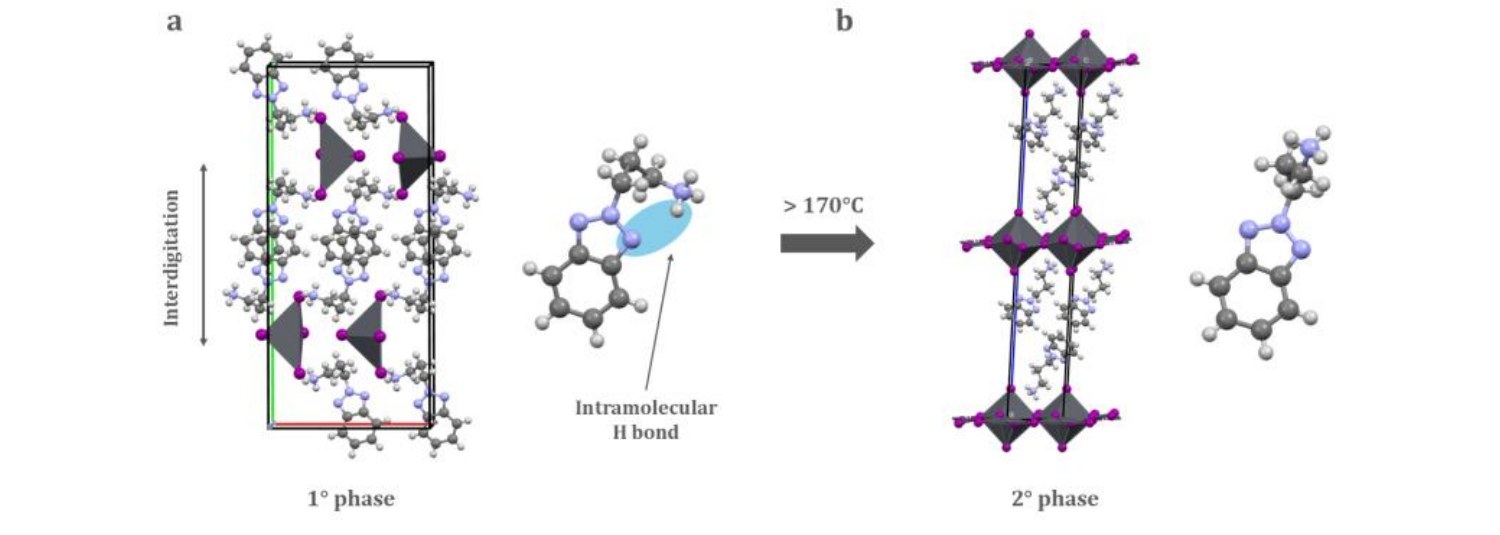Structural and optical properties of benzotriazole-based 2D hybrid perovskites
- Paola La Magna
- Flash-Talk II
- TBC
- TBC
P. La Magnaa, E. Garipb, I. P. Machadoc, A. M. Kaczmarekc, C. R. Göbd, W. T. M. Van Gompelb, K. Van Hecke1
aXStruct, Department of Chemistry, Ghent University, Krijgslaan 281-S3, 9000 Ghent, Belgium; bHybrid Materials Design (HyMaD), Institute for Materials Research (IMO-IMOMEC), Hasselt University, Martelarenlaan 42, Hasselt B-3500, Belgium; cNanoSensing, Department of Chemistry, Ghent University, Krijgslaan 281-S3, 9000 Ghent, Belgium, dRigaku Europe SE, Neu-Isenburg, Germany
e-mail: Paola.LaMagna@UGent.be
Over the past decade, hybrid organic-inorganic perovskites (HOIPs) have received significant research consideration mainly because of their use as active layers in perovskite solar cells (PSC) [1]. In particular, lower-dimensional 2D HOIPs are currently receiving increased attention because of their generally enhanced material stability compared to their 3D counterparts and their much higher degree of compositional flexibility [2,3]. One of the points of strength of the 2D HOIPs is that - whereas the A cation in 3D HOIPs (ABX3, B = Pb2+ and X = I-, Br-, Cl-) can only be selected from a very limited range of small organic cations - the bulkier A* cation in 2D HOIPs (A*2BX4) can be selected from a huge potential cation pool. While most 2D HOIPs synthesized so far primarily utilize relatively simple A* cations, the unique 2D structure offers exciting opportunities to develop more sophisticated A* cations with enhanced functionalities, such as specific optical and/or (semi-)conducting properties.
In this work, we explore the use of a benzotriazole derivative with a three-carbon alkyl spacer (BtaC3) to form a 2D HOIP. Single-crystal X-ray diffraction (SCXRD) analysis revealed that the benzotriazole-based organic layers in the 2D HOIP structure show interdigitation, reducing the thickness of the organic layer and leading to an unusually dense packing layer (Figure 1a). We monitored the material’s behavior by temperature using in situ PXRD; the stability is preserved for high temperatures until a phase transition occurs at ±170 °C, however the sample changes the from single crystal to polycrystalline. Therefore, structure determination of the 2nd phase could only be effectively achieved using 3D Electron Diffraction (3DED). According to the obtained structure, the 2D packing is still maintained, but the interdigitation between the organic layers is lost (Figure 1b).

Crystal structures of (BtaC3) HOIP in its 1st (a) and 2nd (b) phase HOIP (unit cell)
The 2D HOIPs could be regarded as natural multiple-quantum-well structures in which the semiconducting inorganic layers act as “wells” and the insulating organic layers act as “barriers”, giving to the organic spacer a key role in the optical properties of those materials [4]. In the current case, considering the phase transition above 170 °C, we measured the photoluminescence (PL) spectra of the BtaC3 HOIP in situ with increasing temperature. We observed a blue shift of the maximum peak of the 2nd phase compared to the 1st one, followed by an enhanced intensity. This confirms the loss of interdigitation of the organic spacer and the increasing of the distance between the inorganic layers, changing the electronic nature of the material.
References
[1] Saparov, B.; Mitzi, D. B. (2016). Chemical Reviews, 116, 4558–4596.
[2] Lin, H.; Zhou, C.; Tian, Y.; Siegrist, T.; Ma, B. (2018). ACS Energy Letters, 3, 54–62.
[3] i, X.; Hoffman, J. M.; Kanatzidis, M. G. (2021) Chemical Reviews, 121, 2230–2291
[4] Passarelli, J. V.; Fairfield, D. J.; Sather, N. A.; Hendricks, M. P.; Sai, H.; Stern, C. L.; Stupp, S. I. (2018). J. Am. Chem. Soc, 140, 7313–7323.